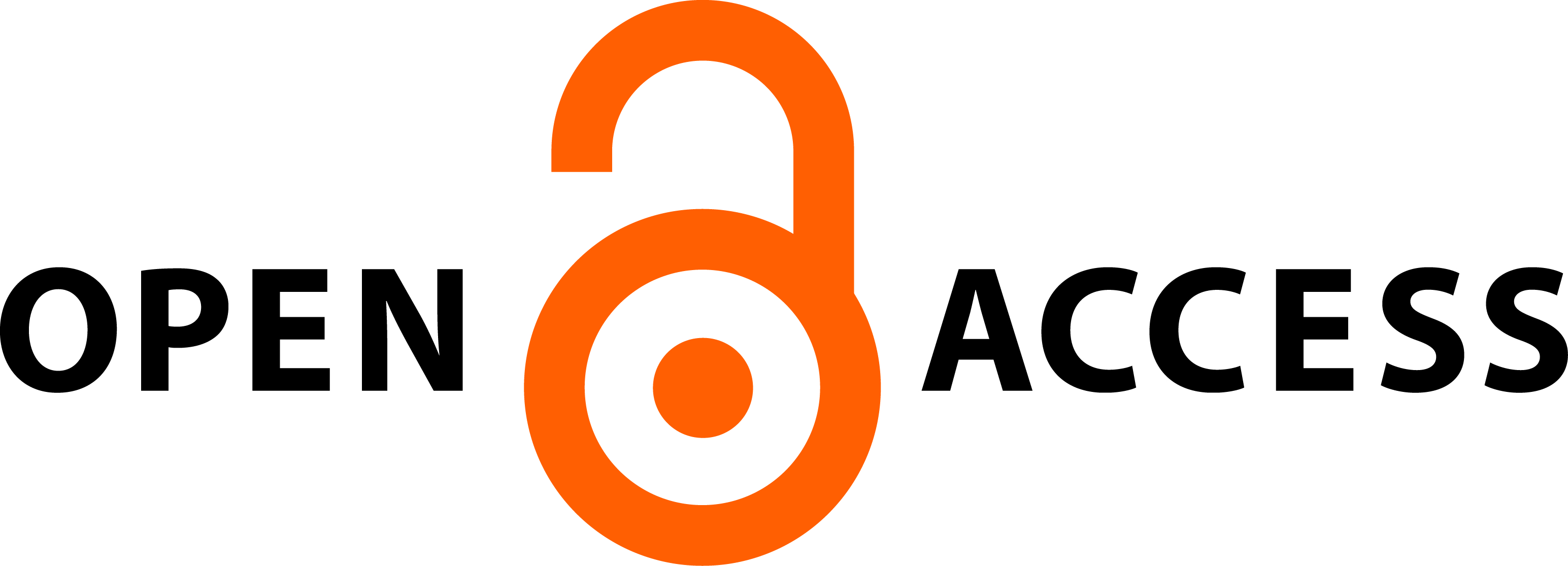A SZÜLÉSZNŐ-SZÜLŐ NŐ INTERAKCIÓ NYELVÉSZETI ELEMZÉSI LEHETŐSÉGEI
Absztrakt
A nemzetközi szakirodalomban már a nyolcvanas évektől jelen vannak azok az empirikus kutatások, amelyek az orvos-beteg kommunikációt a konverzációelemzés eszközeivel vizsgálják. A kutatások elsősorban az általános orvosi ellátások körében folytak, de az egészségügy speciális területeire is kiterjedtek. Kutatásomban az orvos-beteg kommunikáción belül szülésznő-szülő nő interakciót vizsgálom a konverzációelemzés eszközeivel együttműködési stratégiák tükrében. A vizsgálat korpuszát szülésznő-szülő nő közötti beszélgetések diktafonos rögzítés után az ALRITE szoftverrel átírt párbeszédei alkotják. Az elvégzett szakirodalmi kutatás tanúsága szerint még nem volt az együttműködés elemzés fókusza a szülésznő-szülő nő párbeszédek vizsgálatának, ezért remélhetőleg hozzájárul majd az egészségügyi kommunikáció egy speciális területének alkalmazott nyelvészeti elemzéséhez. A tervezett kutatás további célja, hogy a vizsgálatok révén kapott eredmények segítséget nyújtsanak egy az Egészségtudományi Karon alkalmazandó MID szaknyelvi tananyag kidolgozásához.
Hivatkozások
Asemani, Omid. 2011. A Review of the Models of Physician-Patient Relationship and Its Challenges. Iranian Journal of Medical Ethics and History of Medicine (5): 44–57.
Attarha, Mahtab – Keshavarz, Zohreh – Bakhtiari, Maryam – Jamilian, Mehri. 2016. The Outcome of Midwife-Mother Relationship in Delivery Room: A Qualitative Content Analysis. Health (8): 336–343. 10.4236/health.2016.84035. (2023. febr. 2.)
Bálint Mihály. 1990. Az orvos, a betege és a betegség. Budapest: Animula.
Bálint Sándor – Bálint Balázs – H. Kondor Katalin. 2021. Szuggesztív kommunikáció a szülészetben. In Varga Katalin szerk. A szülési fájdalom kezelése – nem farmakológiai módszerek. Budapest: Medicina Könyvkiadó.
Boronkai Dóra. 2009. Bevezetés a társalgáselemzésbe. Budapest: Ad Librum.
Brown, Donald Corey – Hammond, D. Corydon. 2007. Evidence-based clinical hypnosis for obstetrics, labor and delivery, and preterm labor. Int J Clin Exp Hypn 54 (4): 416–431.
Byrne, Patrick S. – Long, Barrie E. L. 1976. Doctors talking to patients: A study of the verbal behaviours of doctors in the consultation. London: HMSO.
Chewning, Betty – Bylund, Carma L. – Shah, Bupendra – Arora, Neeraj K. – Gueguen, Jennifer A. – Makoul, Gregory. 2012. Patient preferences for shared decisions: a systematic review. Patient Education and Counselling 90 (2): 207–212.
Crystal, David. 1987. The Cambridge Encyclopedia of Language. Cambridge–New York–Port Chester–Melbourne–Sydney: Cambridge University Press.
Dahlberg, Unn – Aune, Ingvild. 2013. The Woman’s Birth Experience – The Effect of Interpersonal Relationships and Continuity of Care. Midwifery (29): 407–415.
Drew, Paul – Chatwin, John – Collins, Sarah. 2001. Conversation analysis: a method for research into interactions between patients and health-care professionals. Health Expectations (4): 58–70.
Frankel, R. 1983. The laying on of hands: aspects of the organization of gaze, touch and talk in a medical encounter. In Fisher Sue – Todd Alexandra Dundas eds. The Social Organization of Doctor-Patient Communication. Washington D. C.: Center for Applied Linguistics.
Garcia, Jo. 1998. First Class Delivery: A National Survey of Women’s Views of Maternity Care. London: Audit Commission.
Garfi kel, Harold. 1967. Studies in Ethnometodology. New York-Prentice Hall: Englewood Cliffs.
Garfinkel, Harold. 1972. Remarks on Ethnometodology. In Gumperz-Hymes eds., Directions in Socioloinguistics. 39–324. New York: Halt.
Hambuchné Kőhalmi Anikó. 2014. Szubjektív betegség-elképzelések nyelvészeti elemzése hipertóniás beteg-háziorvos konzultációkban. Pécs: PTE (doktori értekezés).
Hámori Ágnes. 2006. Dominancia és barátságosság a Kulcsár-kihallgatáson. Magyar Nyelvőr 130 (2): 129–165.
Hargie, Owen – Dickson, David – Boohan, Maired – Hughes, Kim. 1998. A Survey of Communication Skills Training in UK Schools of Medicine: Present Practices and Prospective Proposals. Medical Education (32): 25–34.
Heath, Christian. 1982. Preserving the consultation: medical record cards and professional conduct. Social Health Illness (4): 56–74.
Heath, Christian. 1986. Body Movement and Speech in Medical Interaction. Cambridge: Cambridge University Press.
Heritage, John – Maynard, Douglas W. 2006a. Problems and prospects in the study of physician-patient interaction: 30 years of research. Annual Review of Sociology 32 (1): 351–374. https://doi.org/10.1146/annurev.soc.32.082905.093959
Heritage, John – Maynard, Douglas W. eds. 2006b. Communication in medical care: Interaction between primary care physicians and patients. Cambridge: Cambridge University Press. https://doi. org/10.1017/CBO9780511607172
Hunter, Billie. 2006. The importance of reciprocity in relationships between communitybased midwives and mothers Midwifery Journal 22 (4): 308–322.
Iványi Zsuzsanna. 2001. A nyelvészeti konverzációelemzés. Magyar Nyelvőr (125): 74–93.
Józsa Emese. 2011. A raport fogalma és szerepe az orvosi kommunikációban. In Varga Katalin szerk. A szavakon túl: Kommunikáció és szuggesztió az orvosi gyakorlatban. Budapest: Medicina Kiadó.
Kallmeyer, Werner. 1988. Konversationsanalytische Beschreibung. In Ammon, Ulrich – Dittmar, Norbert – Mattheier, Klaus J. Hrsg, eds. Soziolinguistik: Ein internationales Handbuch zur Wissenschaft von Sprache und Gesellschaft. Halbband 2. 1095–1108. Berlin/New York: Walter de Gruyter.
Kekecs Zoltán. 2011. Kutatási eredmények a pozitív szuggesztiók hatásáról a szomatikus orvoslásban. In Varga Katalin szerk. A szavakon túl: Kommunikáció és szuggesztió az orvosi gyakorlatban. Budapest: Medicina Kiadó Zrt.
Keszler Borbála. 1983. Kötetlen beszélgetések mondat- és szövegtani vizsgálata. In Rácz Endre – Szathmári István szerk. Tanulmányok a mai magyar nyelv szövegtana köréből. 164–202. Budapest: Tankönyvkiadó.
Klemperer, David. 2005. Partizipative Entscheidungsfi in Deutschland – Handlungsfelder zur Verbesserung der Entscheidungsqualität. In Härter, M. – Loh, A. – Spies, C. (Hg.), Gemeinsam entscheiden – erfolgreich behandeln. 25–33. Köln: Deutscher Ärzteverlag.
Kordi, Masoumeh – Bakhshi, Mohadeseh – Tara, Fatemeh. 2014. The Eff of Continuous Support during Labor on Labor Progress in Primigravida Women. The Iranian Journal of Obstetrics, Gynecology and Infertility (IJOGI) (14): 7–14.
Korsch, Barbara M. & Negrete, Vida Francis. 1972. Doctor-patient communication. Scientifi American 277 (2): 66–75. https://doi.org/10.1038/scientifi
Kránicz Rita. 2015. Kórházpedagógus tanóráinak interakciós vizsgálata. Pécs: PTE (doktori értekezés).
Kuna Ágnes. 2016a. Személydeixis és önreprezentáció az orvos-beteg találkozáson: Az első személyű deiktikus elemek mintázatai az orvosi kommunikációban. Magyar Nyelvőr (140): 316–332.
Kuna Ágnes. 2016b. Hogy tetszik lenni? Hogy vagyunk, hogy vagyunk? Magyar Orvosi Nyelv 16 (2): 75–79.
Kuna Ágnes. 2020. Változás az orvos-beteg kommunikációban: Változó szemlélet, módszer és gyakorlat. Magyar Nyelvőr 144 (3): 280–303.
Kuna Ágnes. 2022. Az orvos-beteg kommunikáció kutatása és a nyelvészet. In Deme Andrea – Kuna Ágnes szerk. Tanulmányok a nyelvészet alkalmazásainak területé- ről. 219, 41–71, 31. Budapest: ELTE Eötvös Kiadó.
Kuna Ágnes – Kaló Zsuzsa. 2014. Az orvos-beteg kommunikáció a családorvosi gyakor- latban. In Veszelszki Ágnes – Lengyel Klára szerk. Tudomány, technolektus, termi- nológia: A tudományok, szakmák nyelve. 117–130. Budapest: Éghajlat.
Kuna Ágnes – Markó Alexandra. 2022. Betegközpontú és paternalisztikus kapcsolat- építés az orvos-beteg viszonyban: A kapcsolatépítés pragmatikai és szupraszeg- mentális jellemzői. Alkalmazott nyelvtudomány, megjelenés alatt. http://real.mtak. hu/148201/ (2023. febr. 2.)
Lewandowski, Theodor. 1990. Linguistisches Wörterbuch. Heidelberg–Wiesbaden: Quelle–Meyer.
Málovics Éva – Vajda Beáta – Kuba Péter. 2009. Paternalizmus vagy közös döntés? Páciensek az orvos-beteg kommunikációról. Szolgáltatások világa. 250–264.
Maynard, Douglas – Heritage John. 2005. Conversation analysis, doctor-patient inter- action, and medical communication. Medical Education. (39): 428–435.
Mondada, Lorenza. 2003. Working with video: how surgeons produce video records of their actions. Vis. Stud (18): 58–73.
Parratt, Jenny – Fahy, Kathleen. 2003. Trusting Enough to Be Out of Control: A Pilot Study of Women’s Sense of Self during Childbirth. Australian Midwifery (16): 15–22.
Pascali-Bonaro, Debra – Kroeger Mary. 2004. Continuous female companionship during childbirth: a crucial resource in times of stress or calm. Journal of Midwifery and Women’s Health. 2. Jul-Aug; 49 (4 Suppl 1): 19–27.
Peräkylä, Anssi. 1995. AIDS Counselling: Institutional Interaction and Clinical Practice. Cambridge, UK: Cambridge University Press.
Pilling János. 2018. Orvosi kommunikáció a gyakorlatban. Budapest: Medicina.
Pléh Csaba – Síklaki István – Terestyéni Tamás. 1997. Nyelv – Kommunikáció – Cselekvés. Budapest: Osiris Kiadó.
Rákóczi Ágnes. 2011. Pár-beszéd: üzenetek egy gyermek születése körül. In Varga Katalin szerk. A szavakon túl: Kommunikáció és szuggesztió az orvosi gyakorlatban. Budapest: Medicina Kiadó Zrt.
Rijnders, Marlies – Baston, Helen – Scönbeck, Yvonne – Van Der Pal, Karin – Prins, Marianne – Green, Josephine – Buitendijk, Simone. 2008. Perinatal factors related to negative or positive recall of birth experience in women 3 years postpartum in the Netherlands. Birth. Jun 35 (2): 107–116.
Rossiter, Lucille. 2008. The Development Midwife-Mother Relationship Questionnaire (MMRQ). PhD Thesis, Faculty of Graduate Studies and Research, University of Regina, Regina.
Rowe, Rachel E. – Garcia, Jo – Macfarlane, Alison J. – Davidson, Leslie L. 2001. Does Poor Communication Contribute to Stillbirth and Infants Death? A Review. Journal of Public Health (23): 23–34.
Rowe, Rachel – Garcia, Jo – Macfarlane, Alison J. – Davidson, Leslie L. 2002. Improving Communication between Health Professionals and Women in Maternity Care: A Structured Review. Health Expectations (5): 63–83.
Sárkányné Lőrinc Anita. 2015. A családorvos-akut beteg kommunikáció nyelvészeti vonatkozásai. Pécsi Tudományegyetem Egészségtudományi Doktori Iskola (doktori disszertáció).
Sárkányné Lőrinc Anita – Kránicz Rita – Rébék Nagy Gábor – Hambuch Anikó. 2017. Az egészségügyi intézményi kommunikáció változása és a párbeszédek szekvenci- ális mintázata. In Besznyák Rita szerk. Szaknyelvhasználat: A tudomány és a szakma nyelvének alkalmazása (Porta Lingua 2017). SZOKOE, 407–414. Budapest.
Schegloff, Emanuel A. – Sacks, Harvey. 1973. Opening up Closings. Semiotica (8): 289–327.
Schegloff, Emanuel A. 1979. Identification and recognition in telephone conversation openings. In Psathas, George ed. Everyday language: studies in ethnometodology. 23–78. New York: Irvington.
Sengane, Malmsey. 2013. Mothers’ expectations of midwives’ care during labour in a public hospital in Gauteng. Curationis 36 (1): E1–9.
Sharpe, Mary. 2004. Intimate Business: Woman-Midwife Relationships. Dissertation Abstracts International, Ontario.
Silverman, David. 1997. Discourse of counselling: HIV counselling as social interaction. London: Sage.
Ten Have, Paul. 2005. Doing conversation analysis: A practical guide. London: Sage.
Thachuk, Angela. 2007. Midwifery, Informed Choice, and Reproductive Autonomy: A Relational Approach. Feminism and Psychology (17): 39–56.
Tolcsvai Nagy Gábor. 2001. A magyar nyelv szövegtana. Budapest: Nemzeti Tankönyvkiadó.
Varga Katalin szerk. 2008. Szuggesztív kommunikáció a szomatikus orvoslásban. Budapest: VL Sugár Bt.
Varga Katalin szerk. 2011. A szavakon túl: Kommunikáció és szuggesztió az orvosi gyakorlatban. Budapest: Medicina Kiadó Zrt.
Varga Katalin szerk. 2021. A szülési fájdalom kezelése – nem farmakológiai módszerek. Budapest: Medicina Könyvkiadó.
Varga Katalin – Diószeghy Csaba. 2008. A szuggesztiók jelentősége az orvos-beteg kommunikációban. In Pilling János szerk. Orvosi kommunikáció. 147–163. Budapest: Medicina Könyvkiadó.
Weitzenhoffer, Andre M. 1980. Hypnotic susceptibility revisited. American Journal of Clinical Hypnosis 22 (3): 130–145.
Weitzenhoffer, Andre M. 1989. The practice of hypnotism. Vol. 1: Traditional and semi-traditional techniques and phenomenology; Vol. 2: Applications of traditional and semi-traditional hypnotism. Non-traditional hypnotism. Chichester: John Wiley & Sons.
Yeh, John – Nagel, Eryn E. 2010. Patient Satisfaction in Obstetrics and Gynecology: Individualized Patient-Centered Communication. Women’s Health (3): 23–32.








